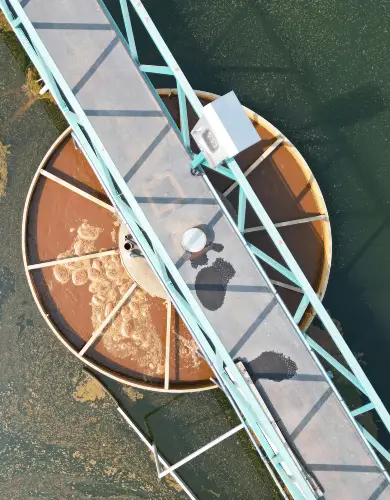What is low-carbon energy?
One of the issues in communicating climate change to the public is its varied lexicon, which is why we wrote an energy glossary to help our readers navigate the space.
For example, the principle of low-carbon energy that we introduce in this article is often used interchangeably with ‘renewable’, ‘green’ or ‘clean’ energy, despite it having its unique meaning.
In this article, we clarify these terms and explain what low-carbon energy is, what types of energy are low-carbon, and how you can get your home or business electricity from low-carbon sources.
Contents
- What is low carbon energy?
- What are low-carbon energy sources?
- Is biomass power a low-carbon source of energy?
- Is natural gas a low-carbon source of energy?
- Is nuclear energy low carbon?
- What energy source has the lowest carbon emissions?
- What is the difference between ‘renewable’, ‘clean’, ‘green’ and ‘low-carbon’ energy?
- How can I use low-carbon energy in the UK?
What is low carbon energy?
Low-carbon energy or power refers to the electricity generated from energy sources that emit significantly less greenhouse gas emissions than conventional fossil fuels.
Being exclusively a function of the amount of carbon released over its life cycle, it doesn’t take into account other important environmental factors like water usage, habitat preservation or health risks.
The table below lets you visualize low-carbon energy by showing the greenhouse gas emissions per kWh of typical power plants/farms by type.
Note the difference between fossil fuels (i.e. coal and natural gas) compared to the rest of low-carbon electricity alternatives.
| Technology (Eq Tonne of CO2 emission per kWh produced) | Median | Min. | Max. |
|---|---|---|---|
| Coal | 820 | 740 | 910 |
| Natural Gas | 490 | 410 | 650 |
| Biomass (Dedicated) | 230 | 130 | 420 |
| Solar (Utility scale) | 48 | 18 | 180 |
| Solar (rooftop) | 41 | 26 | 60 |
| Geothermal | 38 | 6 | 79 |
| Concentrated solar power | 27 | 8.8 | 63 |
| Hydropower | 24 | 1 | 22001 |
| Ocean (Tidal and Wave) | 17 | 5.6 | 28 |
| Nuclear | 12 | 3.7 | 110 |
| Wind (Offshore) | 12 | 8 | 35 |
| Wind (Onshore) | 11 | 7 | 56 |
What are low-carbon energy sources?
Low-carbon energy sources refer to the origin of low-carbon electricity, like wind and water flow, sunlight radiation, nuclear fission reactions or naturally occurring underground heat.
Low-carbon energy sources tend to be non-combustible (except for biomass), which means that they don’t require burning oxygen to produce electricity.
In 2023, 50% of UK electricity generation came from low-carbon sources of energy:
- 2% Hydroelectric power
- 14% Nuclear power
- 34% Wind and solar power
Source: ESO – Britain’s electricity generation mix
Is biomass power a low-carbon source of energy?
Producing electricity from biomass is considered a low-carbon alternative compared to fossil fuels, as is evident from the emissions comparison table.
However, it is the most carbon-intensive of all the low-carbon energy sources as it also involves the combustion of organic matter, with the key difference being that the wood pellets being burnt are simultaneously being replenished in forestry projects.
Note that in low-carbon energy, we only consider biomass burnt for electricity generation and not as a source of heating by means of a biomass boiler.
The Drax power station in Yorkshire is actually the largest biomass power station in the world (and overall the largest in the UK) and uses wood pellets imported from Louisiana (US) to power its 2.6GW capacity biomass generators.
Together with its 1.3GW capacity for generating electricity from coal, it produces 6% of the UK’s electrical supply at the expense of being the largest CO2 emitter in the country.
One of the advantages over other low-carbon alternatives is that legacy coal power stations can be easily converted into biomass as the stockpiling, and burning infrastructure is similar.
We have written a dedicated article on biomass energy if you want to delve deeper into the pros and cons of this energy source.
Is natural gas a low-carbon source of energy?
Being a fossil fuel, natural gas is not a low-carbon source of energy; It is non-renewable at a human timescale and emits large amounts of greenhouse gases when burnt to produce electricity.
However, Carbon Capture and Storage (CCS) technology may significantly reduce natural gas emissions in future by capturing a proportion of the carbon emitted from the flue gas, once and if it becomes commercially viable.
Is nuclear energy low carbon?
Nuclear energy is considered a low-carbon energy source, as the process of nuclear fission using Uranium does not produce greenhouse gases as a byproduct.
However, nuclear energy has many other environmental and safety issues which make it less appealing than other sources of energy.
Uranium is non-renewable at human timescales as nuclear material is a finite resource that takes millions of years to form.
Also, countries like Germany have outright banned nuclear due to the unlikely yet catastrophic risk of nuclear meltdown, as was the case at the Fukushima nuclear plant in Japan in 2011.
Also, mining for radioactive raw materials like Uranium poses risks associated with radioactive and toxic contamination (i.e. radioactive dust, toxic tailings, etc.).
We have a dedicated article on nuclear energy if you would like to delve deeper.
What energy source has the lowest carbon emissions?
It is globally considered that wind, solar, geothermal, hydro (sometimes!), nuclear and tidal power are significantly lower carbon emitters than fossil fuels.
However, the reality is that each individual project has unique circumstances, and recent technological developments are rapidly changing the emissions reduction landscape.
For example, flooding to make way for a hydro reservoir in the tropics may render large areas of carbon-absorbing rainforest ineffective, and the construction of a concrete dam is a carbon-intensive process in itself.
On top of this, recent evidence shows that these submerged forests are rotting away, slowly releasing their carbon back into the atmosphere as methane: a greenhouse gas 80 times more potent than CO2 (see enormous max carbon value of hydro on comparison table)
In these cases, a run-of-the-river project that uses the natural river water flow without the need of a dam may be a significantly lower carbon alternative, at the expense of a much-reduced energy yield.
Another example is the recent efficiency jump of photovoltaic solar panels, which has reduced the life-cycle carbon footprint of current models compared to older ones, as more energy can be produced per CO2 emitted during manufacturing.
This means that a solar farm built at present may be significantly lower-carbon than one built a decade ago.
What is the difference between ‘renewable’, ‘clean’, ‘green’ and ‘low-carbon’ energy?
All of these terms are utilized to describe energy sources that are alternatives to fossil fuels, each having its own subtle difference.
- Renewable energy: An energy source which can be infinitely renewed at a human timescale.
- Clean energy: A generic term used with little rigour to describe energy generation that is both renewable and low-carbon.
- Green energy: A generic term used to describe energy sources that protect the natural environment, tends to exclude nuclear energy.
See our dedicated energy glossary for more energy sector vocabulary.
How can I use low-carbon energy in the UK?
Both business and domestic energy suppliers have to disclose the energy source mix for the electricity they supply to a property according to the tariff being paid.
This means that as a home or business owner, you have some control over what energy sources are powering your property, as this is disclosed on the supplier’s Fuel Mix Disclosure (FMD).
Using our business energy comparison will let you choose a green tariff composed of a mix of low-carbon energy sources so that you can be the greenest business possible at the most comfortable price.

